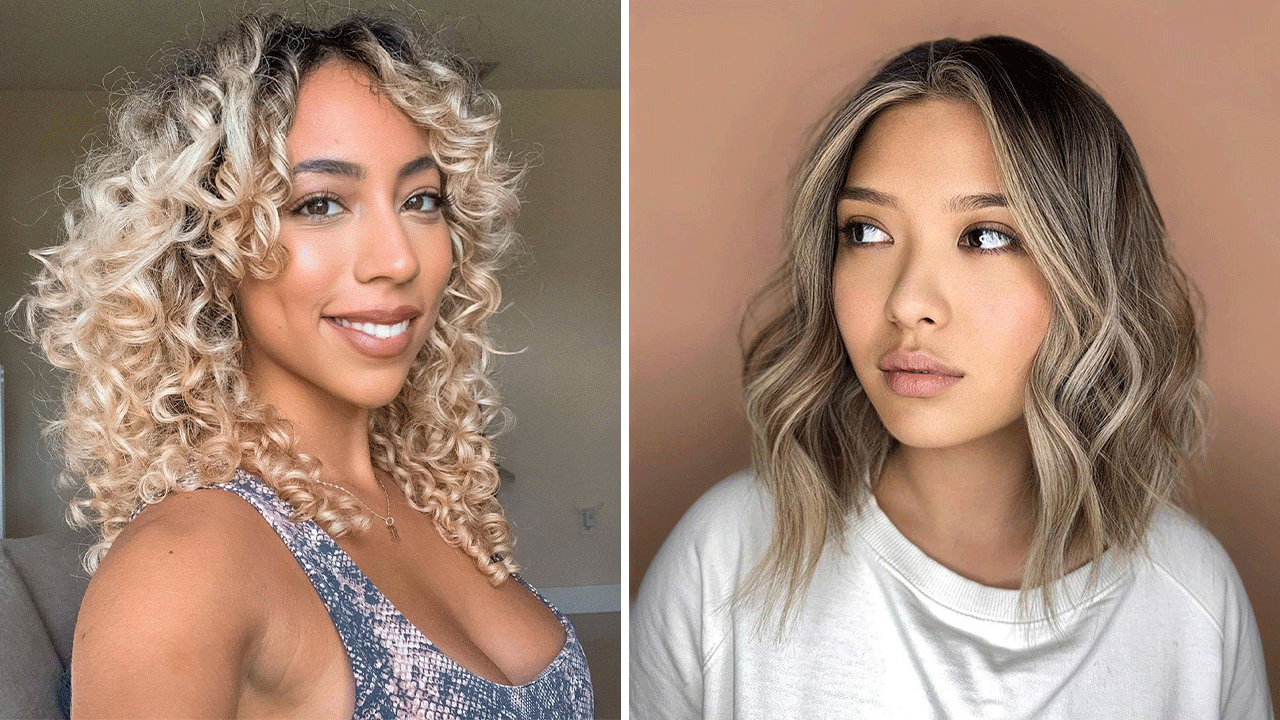Ready to discover the ideal hair color that complements your beautiful brown skin? This guide simplifies the process, walking you through everything from identifying your skin’s undertones to selecting the perfect coloring technique and maintaining your color’s vibrancy. For added volume and texture, consider using hair texture powder. We’ll explore warm, cool, and neutral undertones, showcasing stunning hair colors for each, and explain techniques like balayage and ombre. Let’s find your dream hair color together!
Hair Color for Brown Skin: Your 2025 Guide to Gorgeousness
Finding the perfect hair color for brown skin requires understanding your unique features and selecting shades that enhance your natural beauty. Let’s begin this journey of self-discovery! Learn about achieving radiant and healthy hair, ensuring your chosen shade looks its best.
1. Unlocking Your Undertones: Warm, Cool, or Neutral?
Before choosing specific shades, determine your undertones—the subtle hints of color beneath your skin’s surface. Check the veins on your inner wrist: blueish veins suggest cool undertones, greenish veins point towards warm, and a mix of both could mean neutral undertones. Another helpful trick? Observe how gold versus silver jewelry looks on you. Gold flatters warm undertones, while silver suits cool undertones; neutral undertones look great in both! Knowing your undertones is crucial, ensuring the hair color complements you effectively.
Think of your undertones as the secret ingredient that makes a hair color truly pop or look completely wrong. There are plenty of online resources and tutorials available to guide you if you’re unsure, so leverage them for optimal results. Consider the season too. In warmer months, you might lean towards lighter, brighter colors, while cooler months might call for richer, deeper shades.
2. Your Personal Palette: Colors That Compliment Your Complexion
Once you’ve identified your undertones, explore hair color options that will make you shine. This will guide you toward a palette that enhances your natural beauty.
For Warm Undertones: Imagine rich, sun-drenched colors like warm caramel, rich auburn, honey blonde highlights, or fiery copper. These shades add warmth and radiance to your complexion, enhancing your natural glow. Think Beyoncé with her signature honey blonde locks.
For Cool Undertones: Embrace cooler, sophisticated hues like ash blonde, deep burgundy, sleek raven black, or edgy blues or purples. These colors create stunning contrasts against your skin, making your features pop. Consider a deep plum or espresso hue.
For Neutral Undertones: Consider yourself lucky! You have incredible flexibility in choosing hair colors, experimenting with both warm and cool tones that resonate with your personality and style. Auburns and chestnut browns often work beautifully.
These are guidelines, not strict rules. The best hair color is what makes you feel amazing, so explore shades within these palettes, and try out swatches before fully committing. A strand test can be a great way to preview the color before applying it all over.
3. Beyond a Single Shade: Exploring Hair Color Techniques
Choosing a hair color involves more than just picking a single shade; different techniques create depth, dimension, and style. Balayage, ombre, highlights, and all-over color can produce different results, so choose carefully.
-
Balayage: Soft, sun-kissed highlights that melt seamlessly into your natural hair color, creating a natural-looking, low-maintenance, subtle, and radiant effect. This technique is perfect for adding dimension without harsh lines.
-
Ombre: A gradual transition from a darker shade at the roots to a lighter shade at the ends, adding depth and movement. This is a great option for those who want to experiment with color without fully committing.
-
Highlights: Strategic placement of lighter streaks to brighten your face and add dimension to your hairstyle. Highlights can be fine and subtle or bold and chunky, depending on your preferences.
-
All-Over Color: A dramatic transformation; a bold, single shade applied from root to tip creating a clean, uniform look. This is a good choice for those who want a complete color change.
The best technique depends on your desired level of upkeep and personal style; consider your lifestyle and dedication to maintenance when deciding. Consider your current hairstyle when choosing a technique—some techniques may suit certain cuts better than others.
4. Salon Pro or DIY? Weighing Your Options
Going to a professional hair colorist offers expertise in achieving the perfect shade and application technique, minimizing risks like damage or uneven results. They can also assess your hair’s health and recommend the best products for your hair type. However, it’s more expensive and requires an appointment. DIY kits are affordable and convenient, allowing you to color your hair whenever you want, but they carry a higher risk of uneven color or damage if not used correctly.
Ultimately, the best approach depends on your experience level, budget, and desired result. Carefully following instructions is vital in DIY applications. Always perform a patch test 48 hours before coloring to check for allergic reactions.
| Method | Pros | Cons | Approximate Cost |
|---|---|---|---|
| Professional Colorist | Expert application, customized color, minimized damage risk, better results, personalized recommendations | More expensive, requires scheduling an appointment | $75 – $300+ |
| At-Home Coloring Kit | Affordable, convenient, flexible scheduling | Higher risk of uneven color, potential for hair damage, less precision, limited customization | $10 – $50 |
5. Keeping Your Color Vibrant: Post-Color Care
Regardless of your chosen color, maintaining your new hair color requires a little TLC (tender loving care). Color-safe products, deep conditioning, limiting heat styling, and scheduling touch-ups are crucial.
-
Invest in color-safe products: Use sulfate-free shampoos and conditioners designed to protect and preserve your hair color, preventing fading and extending its vibrancy.
-
Deep condition regularly: Keep your hair hydrated and healthy to prevent breakage and maintain shine from root to tip. Use a deep conditioning mask at least once a week to replenish moisture.
-
Limit heat styling: Excessive heat can cause damage and fading; allow your hair to air dry whenever possible, using heat protectant sprays if you opt for styling.
-
Schedule touch-ups: Plan on regular touch-ups for professional colors to keep your color looking fresh and consistent. This is especially important for covering gray roots.
6. Inspiration Gallery: Find Your Perfect Look
Explore a curated collection of images showcasing diverse hair colors on brown skin to spark inspiration. Finding looks that resonate with you can help visualize your desired outcome. Don’t hesitate to experiment and enjoy the process, expressing yourself through your hair! Remember that what looks stunning on one person might not look quite as good on another, so it’s all about finding your perfect shade. Consider creating a Pinterest board to save your favorite looks.
How to Choose the Best Hair Color for My Brown Skin Tone and Undertones
Understanding your skin’s undertone (cool, warm, or neutral) is crucial for choosing flattering hair colors. Matching your hair color’s undertone to your skin’s undertone creates harmony and visual appeal. Different hair coloring techniques offer diverse results; professional coloring often yields better outcomes but at a higher cost. Proper hair care is essential to maintain vibrancy and prevent damage.
1. Deciphering Your Undertone: The Foundation of Flattering Hair
Figure out your undertone: cool (bluish), warm (yellowish or golden), or neutral (a mix). Look at veins on your inner wrist: bluish suggests cool, greenish indicates warm, and a mix signals neutral. See how gold versus silver jewelry looks on you; gold flatters warm undertones, while silver complements cool ones. Your undertone is the secret ingredient that determines which colors will make your complexion glow, ensuring it doesn’t look washed out. Also consider how your skin reacts to the sun—do you tan easily or burn? This can also give you clues about your undertones.
2. Your Undertones, Your Palette: A Color Guide
Knowing your undertone allows you to select colors that complement it effectively.
-
Warm Undertones: Rich, earthy tones are ideal, like warm browns (caramel, honey, auburn) and golden blonde shades, adding warmth and depth to your complexion. Think of Jennifer Lopez and her signature warm caramel highlights.
-
Cool Undertones: Opt for cool-toned browns (ash brown, mocha) and deep burgundy shades, bringing out the coolness in your skin tone. A deep, cool-toned red can also be stunning.
-
Neutral Undertones: You can experiment with a wider array of colors, both warm and cool tones, to harmonize with your complexion and play with highlights. Consider experimenting with rose gold or lavender hues.
3. Coloring Techniques: From Subtle to Bold
Several techniques can transform your look effectively.
-
All-Over Color: A classic, consistent color that’s simple and efficient. This is a great option for covering grays or making a dramatic change.
-
Balayage: A sun-kissed, natural look with strategically placed highlights that’s low-maintenance and stylish. The hand-painted technique allows for a customized and natural-looking result.
-
Ombre: A gradual transition from a darker root to lighter ends that’s versatile and trendy. This technique is ideal for those who want to experiment with color without fully committing to coloring their entire head.
-
**Highlights
- Unlock Young Doctors’ Work-Life Balance: Actionable Strategies Now - December 2, 2025
- Unlock Life Harmony: Work-Life Integration Guide - November 30, 2025
- Unlock Work-Life Harmony:Your Guide to Integration - November 27, 2025
















